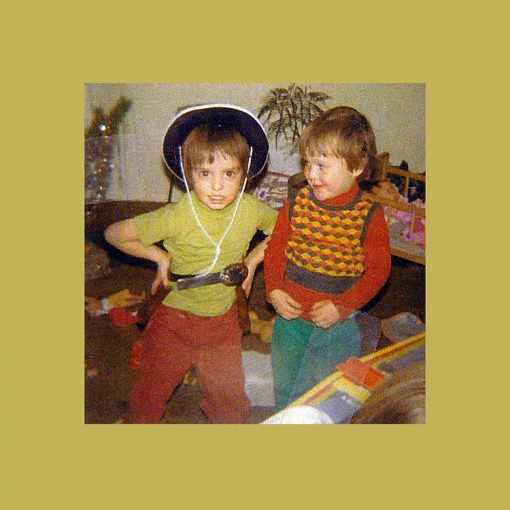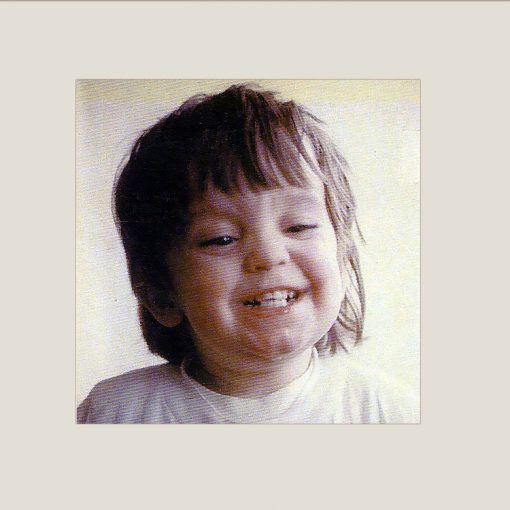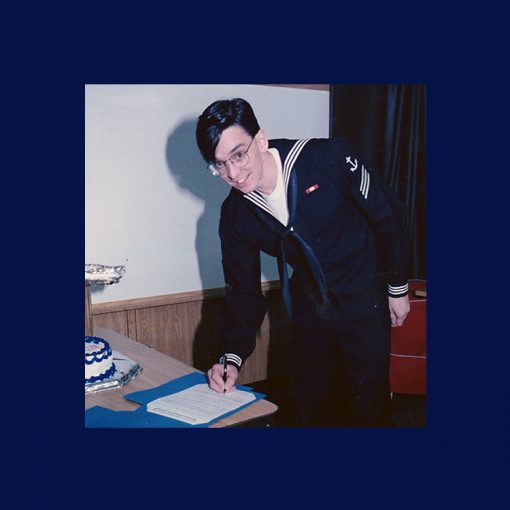November of 1988 found me mostly healed and ready to tackle life as carpenter’s apprentice on large commercial construction projects around town. I secured my first apartment at a rate of $475 per month in a small building a short, scruffy drive from downtown. I bought a used waterbed on the cheap for the single bedroom. It filled most of the available floor space, with a narrow aisle left to reach a closet that took up most of one wall. The rest of the four-hundred square feet was occupied by a small bathroom with a living room and kitchen combo near the front door. The décor was dorm room chic with concert posters decorating most walls and various pieces of art scattered throughout. Spare wood from my carpentry program made for perfect make-shift shelves paired with leftover cinder blocks. A TV, radio, cassette, record-player combo with a pair of speakers joined my library of science fiction and fantasy books.
I paid a quick visit to my dad in California where he had bought my first car on a whim while flush with cash, a pea green 1970 Ford Pinto that I gingerly drove home over the Sierra Nevada Mountains as he followed closely behind. The old man also provided handmade macramé hangings for the walls, assorted kitchen utensils, a coffee maker and a couple of house plants to join my books and stereo on the shelf. We even hit the grocery store for some food. My tiny apartment was now a home.
The winter in that part of Nevada features snow and frigid wind from November through April. My first gig as an apprentice carpenter was building a large elementary school in the wealthy suburbs south of downtown Reno. I arrived at the site with concrete floors already poured and dark brown cinder blocks defining the interior and exterior walls to a height of fifteen feet or so. Four-by-twelve beams were secured to the top of the cinder block with one-inch nuts and bolts. My main task to start with was balancing atop those walls, securing pre-built roof trusses to the beams with horseshoe-shaped steel clips and short, stubby nails. I was able to wear a glove on my right hand but had to keep my left bare to grip the nails. Sheet metal strips held the trusses together in the exact spot I had to nail the clips and required a sharp swing of the hammer to punch through, oftentimes bouncing off to crush my frozen digits instead.
It made me want to piss my pants repeatedly that first morning until around 10:00 am, when my assigned journeyman took pity on me at our morning coffee break and showed me the trick of driving home nails without smashing my fingers. He was a heavyset dude in his mid-30s with black hair and a ready smile. We ended up driving to the job together in his small white pick-up. Most construction guys I knew were total pot heads as well, and he was happy to share a seemingly endless supply of doobies as we drove to work each morning and took our breaks each day, an awesome perk repeated on every job site I was sent to. The older carpenter pulled out his dikes, or diagonal pliers, and held them up. He smiled and slipped a short, stubby nail into its teeth before turning to a scrap piece of beam nearby. A quick tap of his hammer and the nail drove home without whisper of protest, fingers never in danger from the blow.
I smiled and grasped the lesson, though it would be years before I got the larger point. I had jumped into an unfamiliar task without figuring out the most effective way or even asking for tips from my more experienced partner, despite repeated failures that left me with mangled fingers. My first exposure to analytical thinking would help me on the job from that point forward, with a couple notable exceptions but wouldn’t extend to the rest of life until the Navy drilled it into me during boot camp and onboard my first ship. Attention to detail would become second nature, again, with a couple of notable exceptions that I will get to soon enough.
Little sister moved into my small apartment following her own Job Corps experience. She didn’t want to live with either parent, though my place wasn’t much better than going home for vastly different reasons. At that point in our young lives, we still hadn’t learned how to value one another properly and spent most of our time arguing. One story Abby likes to tell is getting ready for work one morning in the bathroom when I pinched the sensitive skin on the back of her upper arm. Her instinctive move was to whack me across the face with the brush she was holding, a completely reasonable response but one I didn’t take well at the time.
One look at my face and she slammed the bathroom door, locking it. By the time I punched my way through the thin plywood, my rage had subsided enough that all I demanded was an apology that Abby readily provided. It wasn’t my proudest moment, but it would be decades before I learned to control the white-hot rage that seems a genetic legacy. From that day forward, door-sized rock posters on each side covered the hole and provided a modicum of privacy for anyone using the toilet.
To my credit, when she had a grand mal seizure a few months later while showering for work in the morning, I dove into action and held her thrashing, naked body at the bottom of the bathtub to prevent damage, though the initial fall snapped her collarbone like a dry twig. I would provide butler and nursing services in the weeks to come as she healed enough to take care of herself.
My first job as a carpenter ended with the apprentices being laid off in advance of the work only journeyman and master carpenters could complete. I was offered an open spot at an identical school being built across town by the same contractor and found myself balancing on top of cinder block walls once again, attaching endless horseshoe clips with short, stubby nails held safely between the teeth of my dikes. It was a welcome case of déjà vu that saw me slot right in without missing a beat. I finished work on my second elementary school project and transferred to the multimillion dollar Rose Ballroom expansion of John Ascuaga’s Nugget in Sparks, Nevada, a little less than five miles from the famed “Biggest Little City in the World” arch in downtown Reno. The gig had a party atmosphere of working at a job attached to the largest casino on that side of town and the ridiculous amount of overtime pay we made for grinding out ten hour days, six days a week.
I joined a crew covering the exterior sheetrock with two-by-eight foot sheets of inch-and-a-half thick foam, the first step in a stucco system called Dryvit. The foam was attached using ultra-sticky glue scooped from ten-gallon buckets and applied with quarter-inch notched trowels. The Smurf-blue substance dried on our trowel blades in a thick layer of rubber that needed to be scraped off each night using razor blades to be ready for use the next morning. Once the foam was laid down, we used foot-long pieces of two-by-four with strips of 12-grit sandpaper glued on the bottom to rasp away the rough edges in a snowstorm of fine particles. A pre-tinted, tan stucco was then applied to the foam over a light-blue plastic mesh rather than traditional steel lath.
Old friends from the Job Corps plaster program, now union apprentices, joined midway through the job to provide the fine-tuned troweling skills needed for the finishing steps. One of the new plaster guys, Justin, lived in the same dorm as I did at Job Corps. His fiancé had also recently graduated and both of them moved in. It wasn’t the last odd living arrangement my generous-to-a-fault nature would bring into my life. I didn’t need the extra dough, but they needed a place to stay and I sort of had the space. My sister had moved in with a friend of hers across town, a much better fit as a roommate until the crazy chick used a butcher knife to secure a note to Abby’s bedroom door telling her to move out after a locked bathroom left her flummoxed during a drunken tirade.
Despite a solid career developing with the union, I was working on the side with another friend who owned a carpet cleaning company with contracts to scrub the floors of area houses, fast food restaurants, apartment buildings and a couple of small casinos. This became my new routine on evenings and weekends. Most of the work took place after the restaurants or casinos had closed or the crowds had thinned. A couple bumps of coke or meth and we would lean into our task with pharmaceutically-focused intent, chatting like potty-mouthed school girls late into the night or early the next morning.
Jude was an ex-college football player who stood six-foot-six in bare feet and weighed in at two-hundred-fifty pounds most days. We were pretty tight those two years before I joined the Navy, a seriously odd couple looking for trouble in his sleek sports coupe. Jude’s wife was more accommodating than any wife I have ever met, including my own who accommodates plenty. The party didn’t end until she got pregnant not long before I left Reno and all familial expectations changed accordingly. In the meantime, we clocked some crazy adventures in a town where entertainment is king and temptation a standard deviation.
Once I secured a fake Job Corps ID from another recently-graduated alum, clubs and casinos joined the list of possible destinations to find trouble. I lost the ID a couple of months later at a casino trying to buy drinks. It was actually the Nugget’s awesome tiki bar Trader Dicks. Challenged on the specific details of my assumed identity, I drew a total blank as I hadn’t taken the time to memorize the data. Security was called to confiscate the suspect plastic and escort me from the building for a permanent eight-sixing. I was happy I didn’t work there anymore. It was a total rookie move that would find me sidelined to underage house parties until I left.
I showed up to my final job in October of 1989 just as I started my second year as a carpenter. B.D. Billinghurst was an enormous middle school being built off I-80 on the way out of town heading west, halfway between downtown Reno and the California border. My second year in the carpentry program brought with it a requirement to attend several advanced skills sessions at the well-equipped union training center in preparation for the journeyman’s exam as a fourth year apprentice in two years. I showed up to random classes over the next six months or so, before ditching Carpenter’s Local Union #971 in favor of entrepreneurial misadventures with Jude. It wouldn’t be the last time I folded a solid straight to shoot for a Royal Flush.
The master carpenter I reported to was a Vietnam Vet with killer weed to share. I responded in kind whenever possible and not as often as I would have liked. I would also have liked to blame the two mishaps I had on the job on the potent bud, but while I am naturally clumsy, these situations could have happened to any apprentice with a lack of experience. Many of the same techniques employed building the two elementary schools I had worked on took up my first couple months. Once a wing was completed, we moved inside to build the interior walls and prepare the way for the other trades to pick up their tasks.
In February 1990, the biggest snowstorm in more than a generation hit the area and dropped twenty-one inches over a two-day period. The job site shut down for more than a week, though the carpenter’s apprentices and union laborers showed up once the snow stopped to dig everything out. Everyone but us were home on an unexpected holiday. Half the roofs had yet to be completed, so there was a lot of digging to be done before work could commence. It was an oddly peaceful experience, pushing wheelbarrows filled with snow down empty hallways to dump it outside the walls. Completing the same task over and over again until the job was finished four days later. Kind of an impressive feat considering the amount of snow that had accumulated inside.
A three-story, cinder block cupola where three wings connected near the front doors was an architectural feature with no function beyond the purely decorative. The roof at the top of the vaulted space was covered with three-quarter-inch tongue-and-groove plywood that had to be nailed to the trusses as the final step before being covered by standing-seam, aluminum roofing in a bold teal. Once the blizzard recovery was complete, a thin layer of ice needed to be melted in order for the cupola to be nailed off and ready for finishing. I climbed up to that ridiculous height from the roof of the northern wing via a fifty-foot extension ladder, lugging a twenty-pound propane tank behind me with a five-foot hose connected to a long-handled torch.
The roof had a shallow pitch and was maybe twenty-feet on each of four sides. I sparked up my torch and went to work melting the ice near the peak. I slowly made my way back and forth, melting the ice as I went. It was on the third or fourth pass that my feet went out from underneath me and I dropped the torch, flame dying as soon as my fingers left the trigger. I started sliding toward the eastern edge and a two-story drop to a mechanical platform rather than a finished roof like the north and south wings. It also could have been another 10 feet to the concrete floor but for the platform. There was nothing I could do to stop my fall, so I tried controlling it instead. I focused intently on the approaching end of the plywood roof, watching helplessly as my ass followed my boots over the edge.
I fell from the sky, arms waving to keep my balance and eyes wide to judge the quickly approaching end to my journey. I landed on both feet with a solid thumb, my butt nearly touching the inch-and-half plywood deck covering the two-by-twelve platform and knees bending almost to my ears. I popped to a standing position and sat abruptly on a nearby sawhorse as my legs turned rubbery. The two guys who were working on something or other at the time didn’t say anything at first, trying process what they just saw. They then rushed forward to make sure I was okay. Once it was clear I had avoided any real damage, I was compared to a cat startled to find it had landed on its feet after a crazy ass fall. I couldn’t disagree, so I laughed it off and mentioned something about having nine lives before climbing back on the roof and carefully nailing two-by-fours around the edge to avoid testing my survival abilities a second time.
I wasn’t so lucky to escape my next mishap unscathed. It was toward the end of the project and we were wrapping up the final construction tasks before the interior designers and furniture movers took over. Each classroom featured soaring ceilings with exposed ductwork painted in shades of salmon and teal as well as tubular metal trusses that provided the bearing structure for the roof. Between each truss, one-by-four strips were nailed into place to provide a base for the ceiling tiles to come and looked like huge squares of ramen noodles. I was partnered with a new apprentice and we set up tiered scaffolding to give us access to the area. Tools by this point were catch-as-catch-can. We scored a pneumatic nail-gun that was definitely old school but would get the job done. The new guy held one end of the strip in place while I started nailing at the other end.
We then climbed higher on the scaffolding to attach the next piece. Over and over throughout the morning, moving the scaffolding as needed. I was climbing to the highest level of the scaffold just before lunch, maybe twenty feet from the concrete floor, when the nail-gun in my hand brushed almost casually against my thigh, causing my finger to hit the trigger and shoot a ten-penny nail into my left leg, just above the knee. The missing feature that would have protected me from this sudden assault of the flesh was a safety at the dangerous end that required significant pressure to trigger a nail. The dinosaur I was carrying didn’t need such coaxing. I looked down at the shiny nail head lying flat against the dark blue denim. I informed my partner in a calm voice about what had happened and set the nail-gun down on the scaffolding.
I hopped to the end on one leg and slowly climbed down the side without using my left leg. Once at the bottom, I yanked the nail out and limped toward the office. I was driven to the hospital by the Amish foreman where an x-ray confirmed the nail had missed anything worth mentioning. I spent a couple days at home until the worst of the pain was gone and then showed back up to the job to do miscellaneous odd jobs that didn’t require a lot of leg strength, hobbling around the site until I finally healed.





